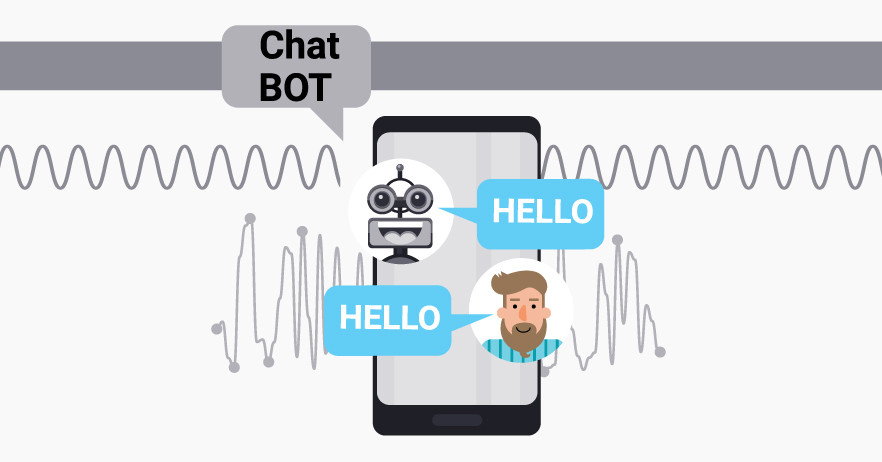There has been lot of buzz around ‘Conversational engagement’ as it allows the companies to engage with customers closely to understand and provide a tailored experience. Today, instead of customers approaching the companies, the companies are expected to be where the consumers are, and that’s the need of the hour. This can be seen from the form of interaction that has evolved from a physical store-front to a website and subsequently to a mobile application. Taking this one step further, we see companies showing their presence on Facebook messenger, Whatsapp and other platforms which are used by consumers on daily basis. So, let’s see how introducing the conversational channel in the Airline industry help them in creating a competitive advantage.
Conversational Channel of engagement
Conversations over text started in the work places with the introduction of office-based instant messengers. Today, Bots are reshaping the world around us. 24*7 availability, improved efficiency and reduced costs are some of the primary reasons they came into existence. With time, these bots are evolving and their existence is being redefined by features such as personalized assistance, increased revenue through targeted selling and improved customer experience.
Chatbots and Voicebots provide us a natural way to interact with an artificial entity by typing messages or speaking out loud. And this natural way of communication is nothing but the conversational channel. As data science is brought in, the conversation becomes increasingly contextual with the system capturing the nuances and responding appropriately.

Figure 1: User interaction with a voice/chatbot
Bots in Airlines Industry
Airlines focus primarily on their interactions with their customers and employees.
Interaction between Employees and the Airlines
These interactions span across core business functions and support functions. Some KPIs that could be improved are availability, turnaround time, resource utilization, richer user experience and accuracy.

Figure 2: Voice/chatbot for the Airlines Enterprise
Examples of how the interactions can be re-imagined -
- An employee requesting a password reset need not call the help desk and wait while the agent goes through the necessary validations. Instead, the employee can invoke the Virtual Assistant which performs two-factor authentication, identifies the person by the voice, and immediately provides the password reset option after validating the key sent to their registered mobile number.
- An MRO engineer, who needs to address the defect need not look through the manuals for the resolution. The bot can assist him with a message having the relevant part of the manual as well as the notes from similar resolutions done in the past, enabling a swifter and accurate resolution of the defect.
- An agent who helps a corporate traveler book tickets knows the preferences of the traveler, leading to a contextualized conversation where the agent is not just filling mandatory fields but also recommending relevant flights, hotels, cabs etc., leading to upselling and cross-selling in the marketplace thus created.
Interaction between Customers and the Airlines
Interactions between customers and airlines predominantly happen when the customer plans to travel or is already travelling. Hence, Customer engagement, personalization and ease of doing business are some of the areas that can be improved. And to achieve this, a wealth of information about the customers is needed.

Figure 3: Voice/chatbot for Traveler
Some examples of how the interactions can be re-imagined are
- A traveler looking to pick up some gifts for her daughter’s birthday need not ask around or search shops at the airport. Utilizing the insights obtained using data science techniques, the virtual assistant would know her daughter’s preferences, connect her to airport interior maps and offer to navigate her to the nearest chocolate shop. It can also show the catalogue of chocolates available and help the traveler in ordering from the chat window itself.
- The virtual assistant acts as a trusted adviser, proactively making suggestions such as
1. Travelling to XYZ location is not recommended due to geo-political instability.
2. Hotel ABC just offered 50% discount for New Year’s Eve, are you still interested in spending the New Year’s Eve there?
3. Airport XYZ is undergoing maintenance which may hold you up, I recommend the nearby airport ABC instead.
Such interactions enable the airlines to keep the consumers engaged within the airline ecosystem, reducing the switching tendency and nurturing a loyal customer base.
Conclusion
As the industry aspires to provide chatbots and voicebots, a fundamental question worth considering is: What is the objective? Traditionally, bots would be designed to minimize the interaction or the perceived effort it takes for a user to get a task done. This might sound optimal at first sight but does not extract much information about the user. However, the end goal is engagement and personalized experience. Unless the system understands the profile including needs, wants, aspirations and context of the user, it would be very difficult to offer a truly tailored experience.
In totality, the day is not far when bots become the entity (virtual person) that will know the most about us. They will be able to assist us at all times, from the start of our day till the time we retire to bed.
We, at Mphasis, have been working with several Airlines and other Travel & Transportation companies to add the conversational channel to their repertoire, making best use of our Virtual Assistant Platform that enables adoption in a manner which speeds up time to market, enables standardization, drives reusability, simplifies development and reduces costs.




